Using a screen printing tension meter is essential for getting great results in your screen printing projects. This tool helps you measure the tension of the mesh on your screen, which is important for making sure your prints are clear and sharp. When the tension is just right, it allows the ink to flow smoothly, giving you high-quality prints every time.
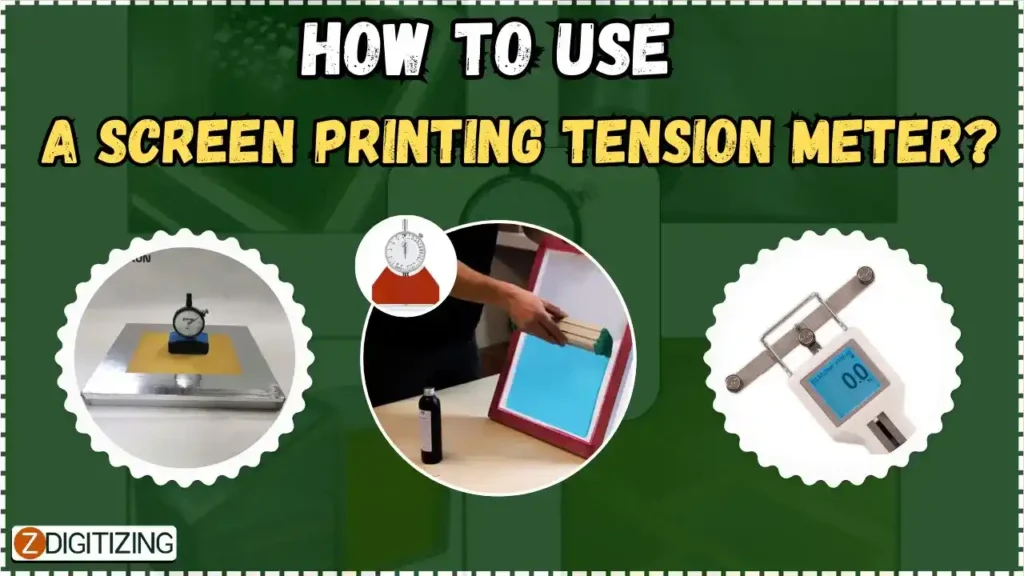
In this guide, we will walk you through the simple steps to use this too effectively. Whether you are a beginner or have some experience, understanding how to use this tool can greatly improve your printing process.
Let’s dive into the steps you need to follow to ensure your screens are perfectly tensioned for the best printing results!
How To Use a Screen Printing Tension Meter?
What is a Screen Printing Tension Meter?
It is a device used to measure the tension of the mesh on a screen printing frame. It ensures that the mesh is properly stretched, providing consistent tension across the screen. Proper screen tension is crucial for achieving high-quality prints, as it affects ink flow, image clarity, and overall print durability. By using a tension meter, printers can maintain the ideal tension levels needed for different mesh types and print requirements, ensuring precise and consistent results.
Embroidery Digitizing & Vector Art Services
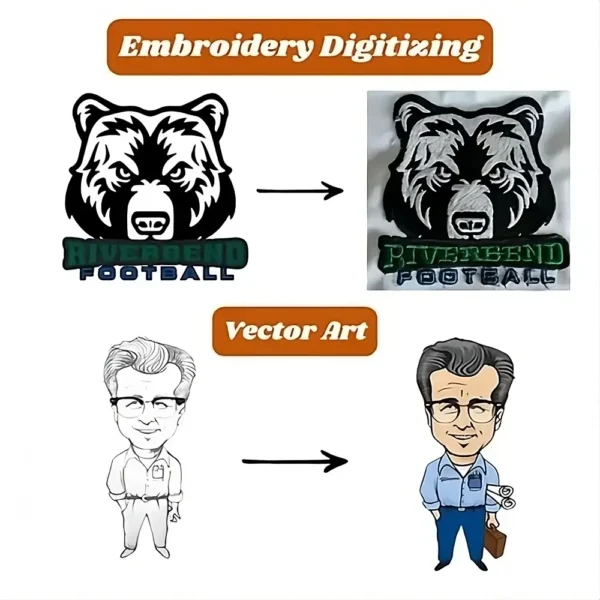
Looking for embroidery digitizing and vector art services that are affordable and reliable? We offer fast turnaround time, guaranteed quality, and the option to preview your design before payment, we make sure you get exactly what you need. Your satisfaction is our top priority, and we’re dedicated to delivering the best results. Don’t wait—try ZDigitizing today and see the difference in quality and service!
Embroidery Digitizing & Vector Art Services
Looking for embroidery digitizing and vector art services that are affordable and reliable? We offer fast turnaround time, guaranteed quality, and the option to preview your design before payment, we make sure you get exactly what you need. Your satisfaction is our top priority, and we’re dedicated to delivering the best results. Don’t wait—try ZDigitizing today and see the difference in quality and service!
Different Types of Screen Printing Tension Meters
Using the right tension meter can significantly improve the quality and consistency of your screen printing results. Below are different types of tension meters:
- SA Screen Tension Meter
- BASELAYR Screen Tension Meter
- Murakami Tension Meter
- Mechanical Screen Printing Tension Meter FT
- STM Screen Tension Meter
1. SA Screen Tension Meter
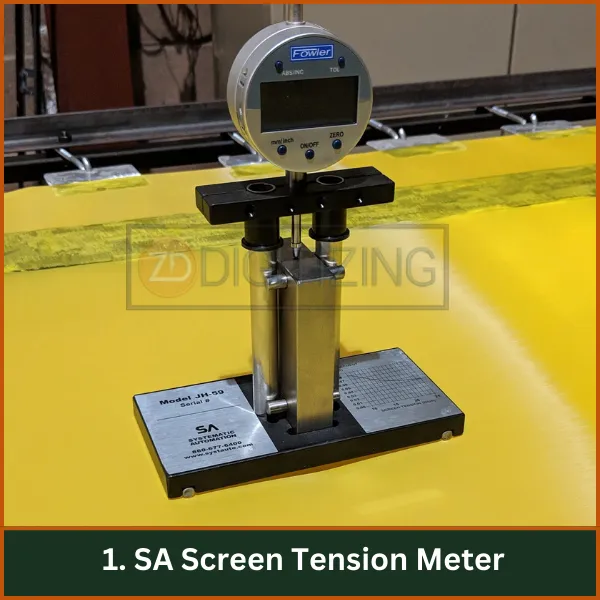
A digital tension meter designed for precise measurement of screen mesh tension, providing readings from 5 to 30 newtons.
Benefits and Limitations
Benefits | Limitations |
|
|
2. BASELAYR Screen Tension Meter
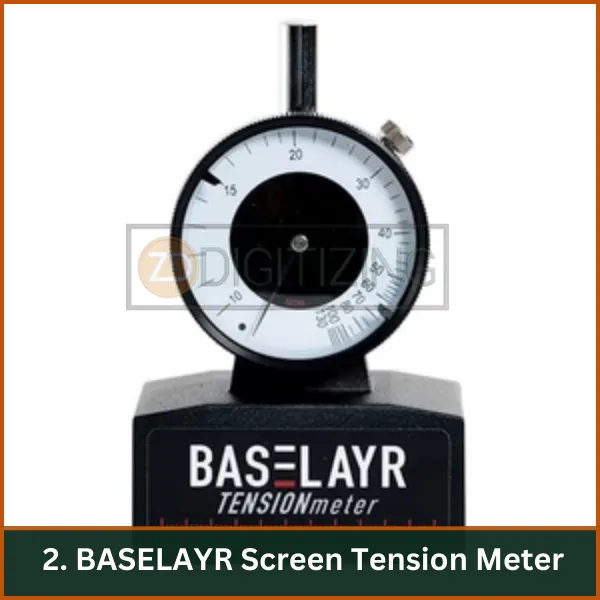
A bi-directional tension meter that measures mesh tension accurately with a range of 0 to 130 N/cm, featuring a calibration certificate.
Benefits and Limitations
Benefits | Limitations |
|
|
3. Murakami Tension Meter
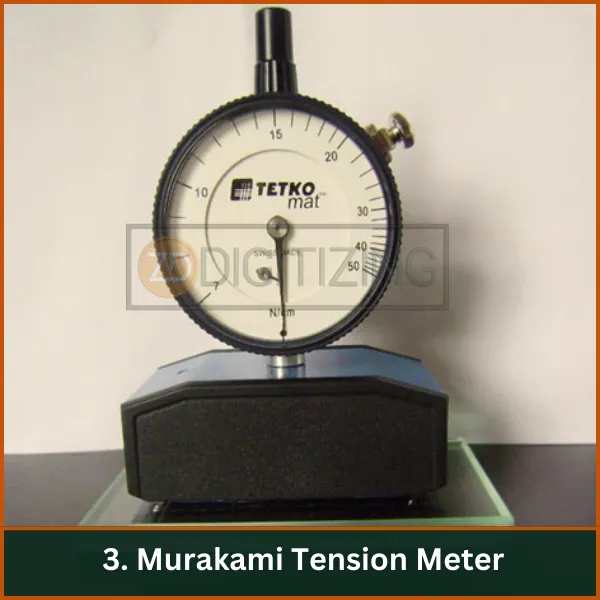
A highly accurate mechanical meter capable of recording tensions up to 60 newtons, ideal for retensioning screens.
Benefits and Limitations
Benefits | Limitations |
|
|
4. Mechanical Screen Printing Tension Meter FT
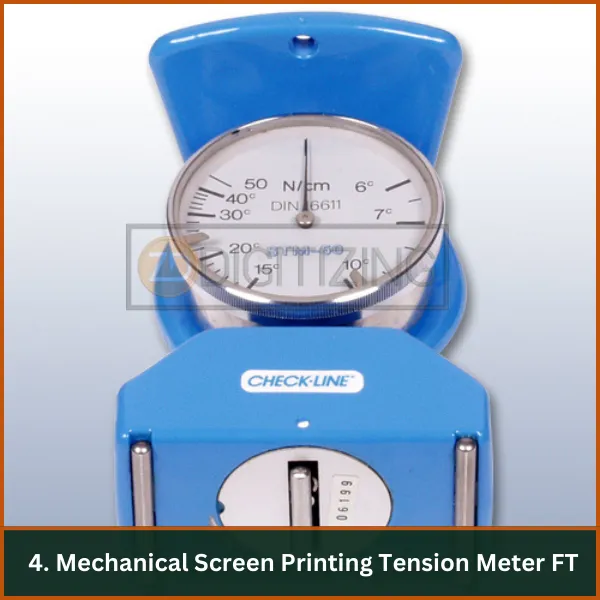
A mechanical meter designed for quick and accurate tension identification in synthetic and steel meshes, adhering to DIN standards.
Benefits and Limitations
Benefits | Limitations |
|
|
5. STM Screen Tension Meter
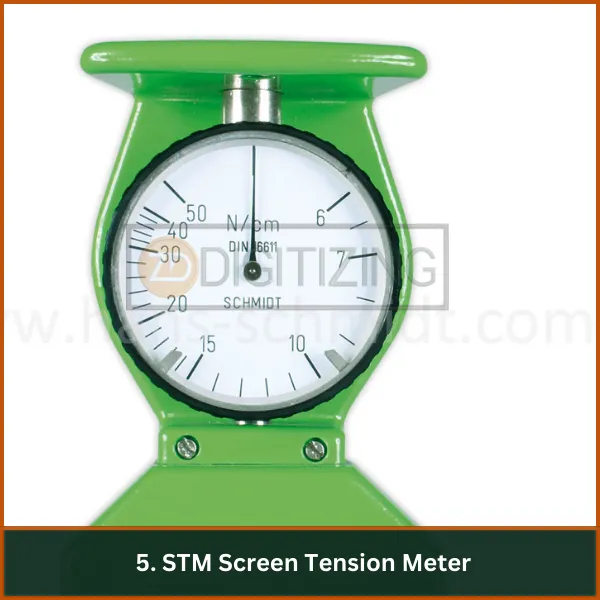
A versatile meter measuring tension from 6 to 50 N/cm, designed for woven materials in both warp and weft directions.
Benefits and Limitations
Benefits | Limitations |
|
|
How to Use a Screen Printing Tension Meter | Step-by-Step Process
Using a tension meter for screen printing is crucial to achieving the correct mesh tension for optimal print quality. Follow these steps to measure and maintain the proper tension.
Step 1: Prepare the Screen
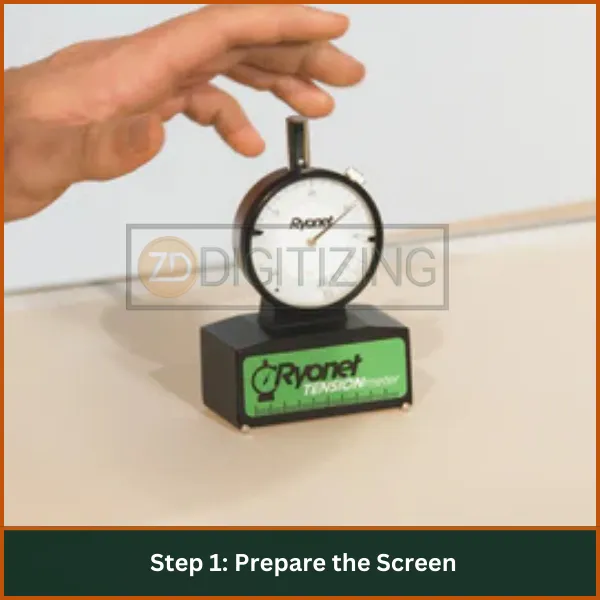
Before you begin, ensure the screen is clean and securely mounted on the frame. A well-prepared screen will help get an accurate reading from your tension meter.
Step 2: Position the Tension Meter
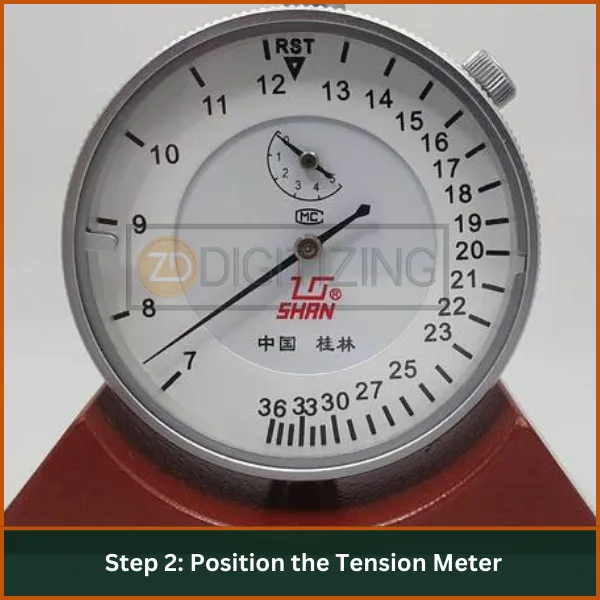
Place the tension meter screen printing device in the center of the screen’s mesh. Avoid placing it too close to the edges or frame, as these areas may not reflect the overall tension accurately.
Step 3: Apply Light Pressure
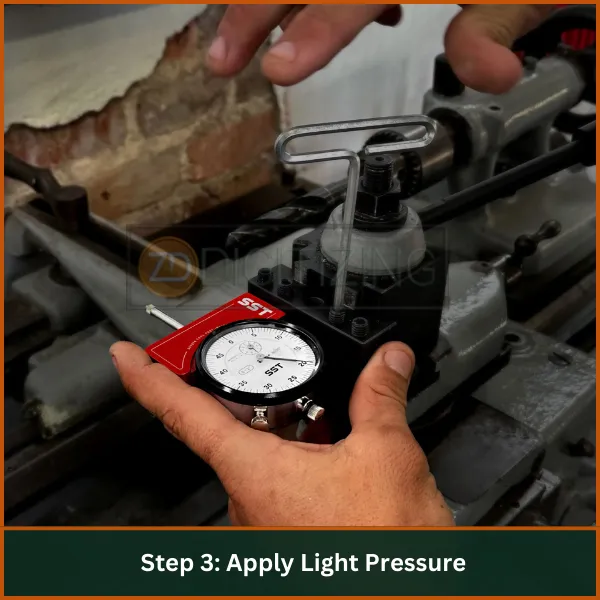
Gently press the meter onto the mesh, ensuring it sits flat. Avoid pushing too hard, as excess pressure can affect the reading or damage the mesh.
Step 4: Read the Measurement
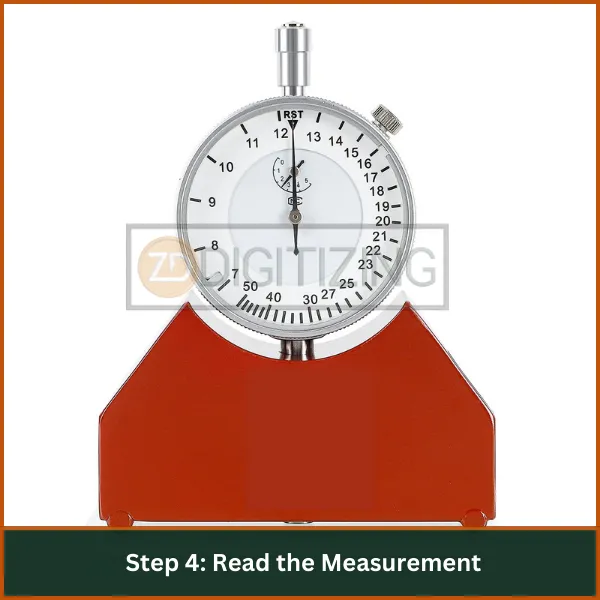
Observe the reading displayed on the tension meter. Most devices will provide tension values in newtons (N). Compare the result with the recommended tension for your specific mesh count.
Step 5: Adjust the Tension
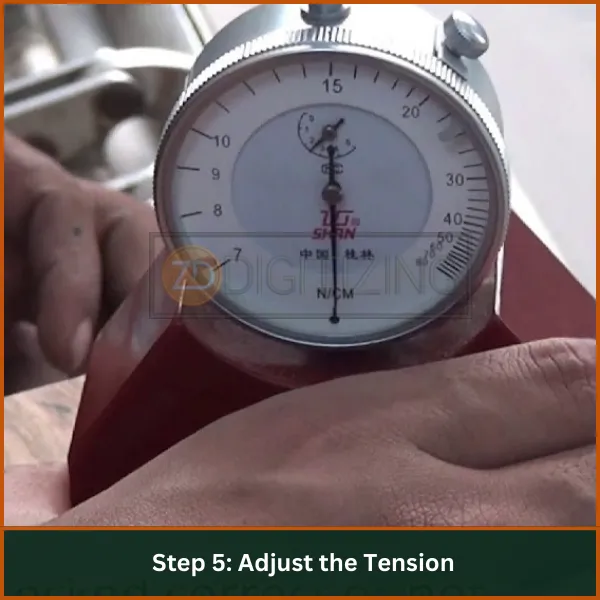
If the tension is off, adjust the screen mesh by tightening or loosening it. After making adjustments, use the tension meter for screen printing again to check if the tension is within the desired range.
Step 6: Check Multiple Areas
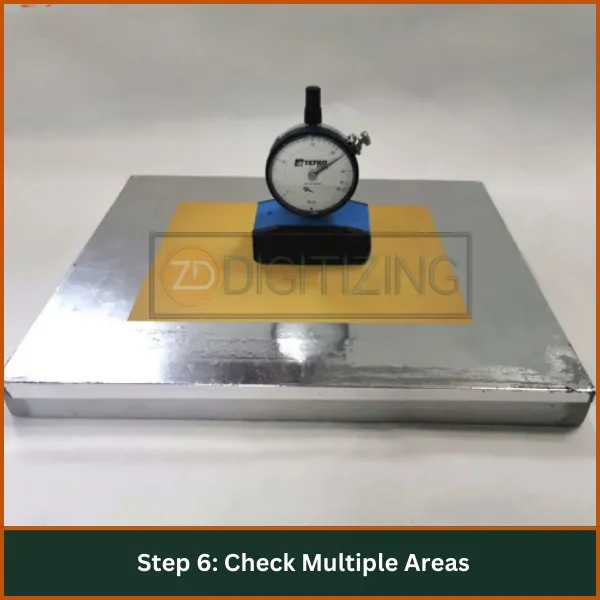
For an even tension, repeat the process in various areas of the screen, such as the corners and edges, to ensure consistency across the mesh.
Step 7: Record and Monitor Tension
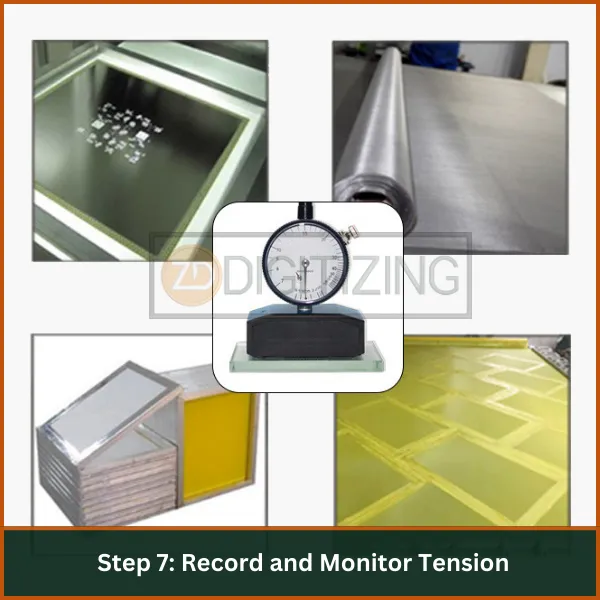
After getting the correct tension, record the readings. Regularly monitor the tension with your screen printing mesh tension meter to maintain print quality and prevent any inconsistencies.
Ideal Tension Levels for Different Screen Printing Meshes
Maintaining the correct tension for different mesh counts is essential to achieving high-quality prints in screen printing. Here are the ideal tension levels for various mesh counts:
1. Low Mesh Counts (40-86)
For lower mesh counts (typically 40-86), which are often used for printing thicker inks like plastisol or for heavy deposits, the ideal tension range is 15-20 newtons (N/cm). This lower tension ensures the ink passes through the larger openings in the mesh smoothly.
2. Medium Mesh Counts (110-160)
Medium mesh counts, which range from 110 to 160, are commonly used for standard printing, such as spot colors and general designs. The optimal tension for these screens is around 20-25 newtons (N/cm), providing a good balance between ink deposit and detail.
3. High Mesh Counts (200-305)
High mesh counts, ranging from 200 to 305, are ideal for fine detail printing, such as halftones and intricate designs. These screens require a higher tension, typically 25-30 newtons (N/cm), to maintain detail and ensure the mesh snaps back after printing, reducing ink buildup.
Common Mistakes to Avoid When Using a Tension Meter
- Incorrect Placement: Placing the meter too close to the edges or frame can lead to inaccurate readings. Always position it in the center of the mesh.
- Applying Too Much Pressure: Pressing the meter too hard can distort the mesh and give false tension results. Apply light, even pressure.
- Ignoring Multiple Measurements: Failing to check the tension in various areas of the screen may result in uneven tension across the mesh. Measure at different points.
- Skipping Calibration: Not calibrating your meter regularly can lead to inaccurate readings over time. Ensure timely calibration for consistent results.
- Not Monitoring Changes Over Time: Mesh tension can loosen with repeated use. Regularly recheck tension to maintain optimal performance.
By avoiding these mistakes, you’ll ensure better accuracy and more consistent printing results.
Embroidery Digitizing & Vector Art Services

Looking for embroidery digitizing and vector art services that are affordable and reliable? We offer fast turnaround time, guaranteed quality, and the option to preview your design before payment, we make sure you get exactly what you need. Your satisfaction is our top priority, and we’re dedicated to delivering the best results. Don’t wait—try ZDigitizing today and see the difference in quality and service!
Embroidery Digitizing & Vector Art Services
Looking for embroidery digitizing and vector art services that are affordable and reliable? We offer fast turnaround time, guaranteed quality, and the option to preview your design before payment, we make sure you get exactly what you need. Your satisfaction is our top priority, and we’re dedicated to delivering the best results. Don’t wait—try ZDigitizing today and see the difference in quality and service!
Maintaining and Calibrating Your Screen Printing Tension Meter
- Regular Cleaning: Wipe the meter with a soft, dry cloth after each use to remove dust and debris.
- Proper Storage: Store the meter in a protective case, away from extreme temperatures and humidity.
- Calibration Frequency: Calibrate the meter every 6-12 months or when readings seem inconsistent.
- Calibration Process: Follow manufacturer instructions or use a calibration block for accuracy.
- Professional Calibration: Consider using professional services if major deviations in readings occur.
Maintaining these practices ensures accurate readings and longer device life.
Conclusion: Key to Consistent Screen Printing Results
Achieving consistent and high-quality results in screen printing largely depends on maintaining optimal tension in your screens. By utilizing a screen printing tension meter and following best practices, you can ensure that your prints are sharp, vibrant, and free from defects.
Regular calibration and careful monitoring of tension will lead to improved efficiency and reduced waste in your printing process.
If you’re looking to enhance your printing projects further, consider our vector art services at ZDigitizing. We offer a fast turnaround time, affordable pricing, and high-quality vector art that can elevate your designs. Plus, first-time customers can enjoy a special 50% discount!
Click here to learn more about our services and how we can help you achieve outstanding results in your screen printing endeavors.
FAQs
A tension meter in screen printing measures the tension of the mesh on the screen frame to ensure consistency in prints.
Screen tension is typically measured using a tension meter, which applies pressure to the mesh and provides a reading of tension level in Newtons or pounds-force.
The pressure required for screen printing varies depending on factors like ink viscosity, mesh tension, and desired print quality, but it generally ranges from 20 to 40 psi.












